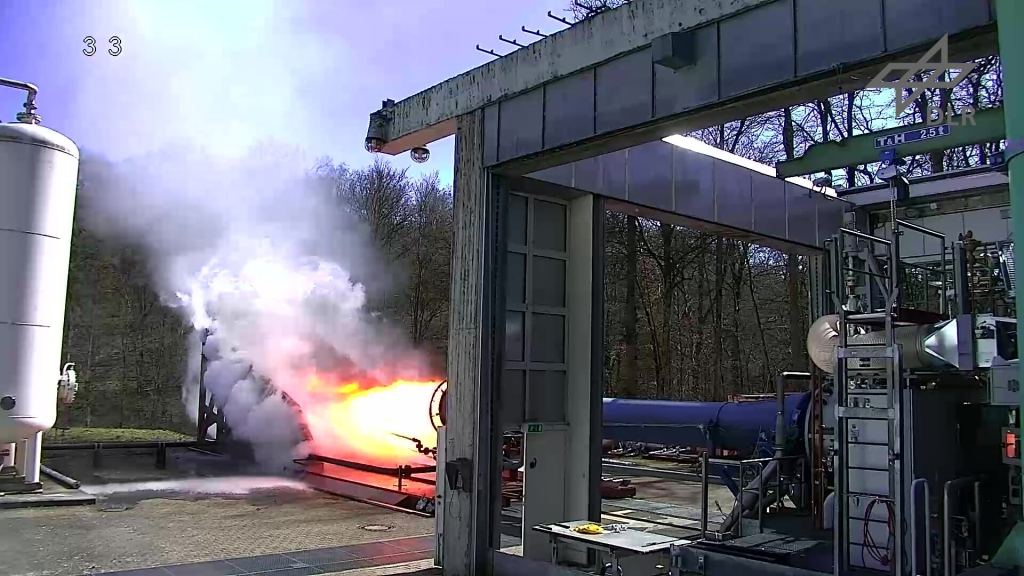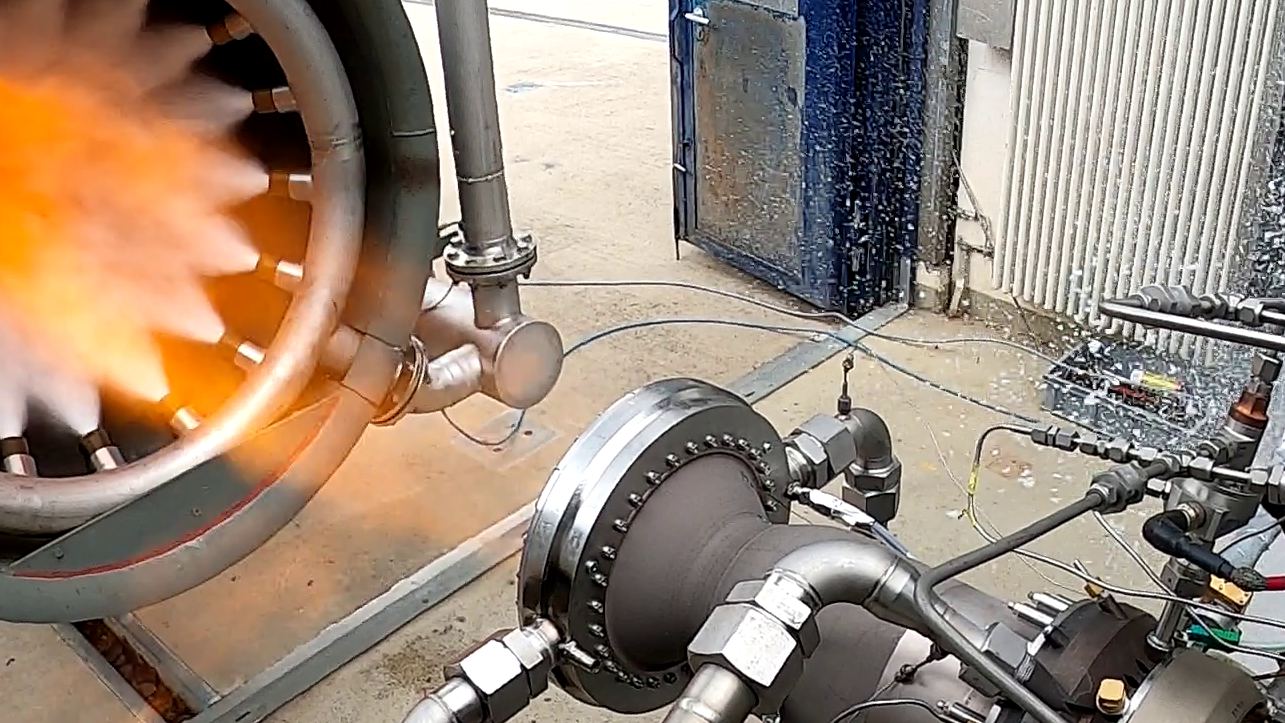This week, European engineers hot-fire tested a fully 3D-printed thrust chamber that could one day power the upper stages for rockets. The chamber has just three parts, and was constructed using additive layer manufacturing, another name for 3D printing.
This hot-fire test lasted 30 seconds and was carried out on May 26, 2020 at the DLR German Aerospace Center’s Lampoldshausen testing facility. The European Space Agency said that additional tests are planned for next week.

The production and tests of these rocket engine components has been performed within ESA’s Future Launchers Preparatory Programme, and over the past year, at least three configurations of combustion chamber geometries and designs have been tested. The chambers are full-scale size, and have a 3D-printed copper liner with integrated cooling channels and a high-strength jacket. Its manifold and single-piece injector head are also 3D-printed.
The full-scale demonstrator models of the thrust chamber are called ETID or Expander-cycle Technology Integrated Demonstrator. ESA says these 3D printed models incorporate the newest propulsion systems designs and are helping to prove new technologies, materials and manufacturing techniques that offer higher performance at lower cost for future launchers.
The 3-D printed designs have been in production since 2018, and in 2019, engineers performed 23 tests for a total operating time of 2,707 seconds. During the testing, 49 different operating points were reached, bringing various testing levels to “extremes” – such as increasing the flow of cool hydrogen in the system and therefore “over-cooling” the hardware during operation. The flow of cold hydrogen also has the effect of cooling the hardware, keeping the temperature within reasonable limits during operation.

ESA said that during the tests this week, two different injector heads, including a fully 3D-printed version were also tested, as well as a regenerative nozzle that optimizes the engine cycle by maximizing the heat pick-up.
Additive layer manufacturing (ALM) is the opposite of subtractive manufacturing, where material is removed and tooled to reach the desired shape. In ALM, 3D parts are built up in successive layers of material under computer control. While early on 3D printing was used mainly for rapid prototyping, it is now frequently used to make finished parts for aerospace as well as the automotive sectors.
The ETID was designed and manufactured by ArianeGroup (Germany), GKN Aerospace (Sweden), Safran Aero Boosters (Belgium), Aerospace Propulsion Products (Netherlands), and Carinthian Tech Research (Austria), and tested by DLR Lampoldshausen.
Several other companies around the world are 3D printing and testing various parts for rockets, including Relativity Space (see the timelapse video below of a rocket fuel tank being printed), and AI Space Factory.
For more information on the 2020 tests, see this ESA webpage.

